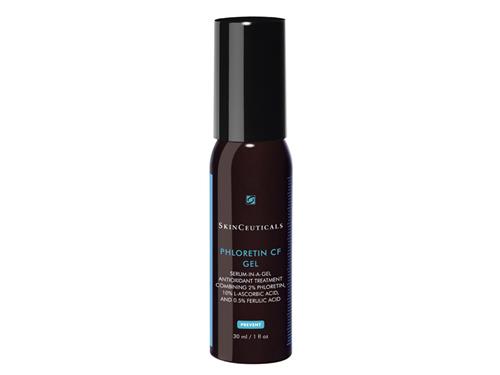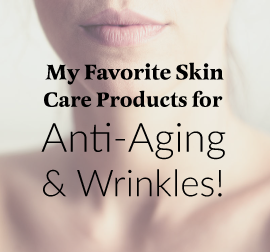Cosmetic Treatments: A Quick Introduction
Here are the most common non-surgical cosmetic treatments for aging skin, and a bit of detail on each below:
- BOTOX® Cosmetic
- Wrinkle, line and lip fillers like Restylane and Juvederm
- Lasers for redness and blotchiness/brown spots/age spots
- Lasers for wrinkles
- Thermage for skin tightening
- Peels
- Microdermabrasion
Botox
What does it do?
Botox is a clear injectable liquid that relaxes the facial muscles that cause wrinkles. It is used to correct frown lines, horizontal forehead lines, lines on the nose, smile lines (crow’s feet) around the eye. It can also lift the eyebrows a little and help to fix a smile that shows too much gum on the upper teeth, and other uses. It can be used in the lower face by an expert injector to lift the corners of the mouth, smooth chin dimpling and reduce lines around the mouth.
What are the risks?
Ironically Botox is one of the safest cosmetic treatments around today, even though it initially may sound the scariest. Botox has been used for over 20 years and has an outstanding safety profile (though it’s not used during pregnancy because no research has been done). It was first used to give relief to medical patients who had uncontrollable twitching or muscle spasms, often in the eye area. When you get Botox, tiny amounts of the botulinum toxin are injected right into the muscle that is overactive. It stays in the muscle, binding to the receptor between the nerve and muscle. This allows the muscle to stop contracting and temporarily relaxes the muscle, and provides a smoother look. It doesn’t travel anywhere else in the body.
If you stick to an expert injector, such as a cosmetic dermatologist, the risks are extremely low. The main risks are, for instance, a temporarily droopy eyebrow or eyelid if the placement of the Botox isn’t perfect or too much is injected. Sometimes people complain of a slightly heavy feeling in the forehead if Botox is used in that area, but that, too, is temporary. There is a small, theoretical risk of developing antibodies to Botox and becoming immune to it, but personally I’ve never seen it in thousands of injections over fifteen years. See the link below for complete details.
For more information, see Dr Irwin’s article on Botox Mistakes & How to Fix Them.
What is a Botox treatment like?
Botox is injected with a very small needle directly into the muscle that needs to be relaxed to erase the wrinkle. Most people feel only a tiny stinging sensation. We use “numbing” cream in our office for 20-30 minutes prior to treatment to make the injections virtually painless.
How often does Botox need to be done?
The effects of Botox are somewhat cumulative. You may need to go every three to four months for the first year, depending on what area you’re treating. After that, the interval often extends out. Many of my patients who have been coming for a long time come every 5 to 6 months. Botox is still the gold standard cosmetic treatment for frown lines.
What is the difference between Botox and fillers?
Botox (or Dysport) is used to relax overactive muscles and smooth wrinkles. It is most often used as a cosmetic treatment in the forehead, between the brows, and for crow’s feet around the eyes. Results normally last between 3-6 months.
Fillers (Juvederm, Restylane, Radiesse, or Sculptra) are cosmetic treatments used to fill and re-contour the face, replace lost volume, and fill deeper folds/wrinkles. Fillers are most often used in the cheek bones, nasolabial folds (around the mouth), temples and lips. Results usually last between 4-12 months (for Juvederm/Restylane/Radiesse) and 1-2 years (Sculptra).
How much does it cost and how much product is needed?
This really depends on your face and how many areas you’re treating. I find many of my patients need a little bit less Botox as time goes on because muscles are less active. Expect to pay approximately $200 to $1,000 per treatment depending on how many areas you are treating (frown lines, forehead, eyes, lower face, etc.) and depending on how big your facial muscles are. Men almost always need more than women because they have bigger muscles – even in their faces.
The Fillers—Restylane/Juvederm
What do they do?
Fillers like Restylane and Juvederm are natural sugars called hyaluronic acids (think a natural substance that is the glue between your skin cells). These are injected into lines, creases, and grooves in the face and provide a near instantaneous correction of medium to deep lines. They are also injected into the lips to provide plumping, or more volume or definition to the lips.
Risks.
The mostly temporary risks associated with this type of cosmetic treatment include bruising, swelling, slight discomfort (feels tender like a bruise), and mild redness at injection sites. There are however, some serious risks that are rare, such as scarring. Be sure you have a competent doctor and read your consent forms for these procedures.
For more information see Dr Irwin’s articles:
What is a treatment like?
Fillers are injected directly into the wrinkles or lips. We usually use a topical numbing cream to make the injection comfortable. Most patients feel only a minimal discomfort and feel that the result is well worth that small discomfort.
How often should fillers be injected?
Restylane/Juvederm will generally last 4 to 9 months depending on how much product is used and how it’s layered in the skin.
How much does it cost and how much product is needed?
For Restylane/Juvederm, most women will need one to two syringes per appointment. Expect to pay $400 to $700 per syringe. If you’re on the younger side, a half syringe of Restylane twice a year might be plenty. If you are using more than two or three syringes per appointment, it might be time to consider Sculptra, which will reduce your need for Restylane/Juvederm.
Laser Treatments
Lasers can be excellent cosmetic treatments for:
- Redness and dilated blood vessels on the face or legs
- Blotchiness, brown spots, and age spots
- Wrinkles
- Hair removal
What do they do?
Lasers are just light that’s “tuned” to a specific wavelength to treat a problem. IPL‘s are laser “cousins” in that they have different wavelengths of light blended together like a fine wine. Different wavelengths are used for different problems like brown spots, red blood vessels, unwanted hair, sun damage, etc. A good laser can target the problem without harming the surrounding skin. There are many different lasers now, and I discuss laser treatments in greater detail in my book and in other sections of this website.
Risks.
In expert hands, the risks of laser cosmetic treatments are very small: usually a little swelling and/or an increase in redness or the brown spots for 3 to 7 days after the treatment. A good laser center will prepare you for those. But there are big risks with lasers in general—severe burns, permanent scarring, permanent discoloration, and even death are possible in a center with untrained, inexperienced, or unethical personnel.
What is a treatment like?
Most laser treatments require you to lie down and wear protective goggles or eye coverings. You will often have a cool gel applied to your face. The laser gives you a short pulse that feels like the mild snap of a rubber band on your skin. These pulses are applied over the area being treated. Most laser treatments are not relaxing or soothing, but most patients find the treatments quite tolerable. Usually treatments for redness or brown spots, and for hair removal or wrinkles require a series, often once a month for 3 to 6 months. After that, a typical maintenance schedule would be once or twice a year.
How much do laser treatments cost?
A series of 3-5 treatments for redness or brown spots on the face or neck will usually be $1,000-2500 ($300-500 per individual treatment). Hair removal is less, but depends on the area being treated. The newer fractional lasers, like the Fraxel, which treats a variety of problems, average approximately $1,000 per treatment, with a series of two to four required. Other lasers for wrinkles are discussed in depth in other sections.
Thermage
What does it do?
Thermage uses sound waves (radiofrequency) to tighten your skin. This reduces the inevitable sagging that we all notice above our eyes, around our cheeks and mid-face, and particularly along our jawlines. This cosmetic treatment is used primarily on the face, eyelids, and neck, but has been done on body (less effective though), like the abdomen and the knees.
Thermage works by using the radiofrequency energy to create a uniform heating effect in the deeper layer under the skin. This gentle heating tightens existing collagen and stimulates the production of new collagen. The slight immediate collagen contraction followed by gradual collagen tightening reduces wrinkles and achieves brow lifting, cheek tightening, and jaw line tightening.
What are the risks?
The only real risk with this cosmetic treatment is that you might not respond. About 5-10% of patients don’t get a good result with Thermage, but it’s not possible to predict ahead of time who that will be. Even if you don’t see a noticeable tightening, we know that everyone builds collagen with it and it helps to prevent further sagging.
There were some indentations reported with the first generation of Thermage tips, but the tips and protocol were revised—and no similar problems have been reported in several years. Rarely small superficial (usually a tiny blister) have been reported and usually heal without problems.
What is a treatment like?
In times past, Thermage treatments were painful and we used to sedate all our patients. With third generation tips, Thermage treatments are very comfortable and no sedation or driver is needed. They made a huge improvement in the cooling function with this tip and also increased the size of the tip and number of pulses so that the treatment is more effective.
How often should Thermage be done?
The original Thermage studies showed that stimulation of new collagen growth in the skin lasts up to about 2 years. Many laser centers, including mine, that do work with Thermage frequently recommend it more often in certain circumstances. For my patients in their 30s and 40s, every other year seems like a reasonable interval given the data. As you get into your 50s, 60s, and 70s, perhaps yearly at that point. It is also very helpful for maintaining facelifts. Some stars in L.A. have Thermage done every 3 months. That seems like overkill to me but there’s no data on that time interval.
How much does it cost?
A full-face Thermage can range from $2,000 to over $3,000.
Peels
What do they do?
Light and medium depth peels serve three purposes: 1) they help slough off the outer dead layer of skin, which removes a superficial layer of sun-damaged skin, and 2) they increase the cell turnover rate, which makes the texture of the skin slightly better giving it a fresher and younger looking appearance, and 3) they unclog pores.
Deep peels are rarely done anymore because laser resurfacing has replaced them. Light peels are generally done by aestheticians. Medium peels are roughly defined as peels that cause peeling anywhere from 5 to 10 days with mild to moderate pinkness/redness associated. These cosmetic treatments are generally done by a nurse or a doctor.
The most common ones use glycolic, salicylic or other hydroxy acids or TCA (trichloroacetic acid) a cousin to vinegar (acetic acid). Light peels can be repeated every 4-12 weeks.
What are the risks?
The risks are minimal for light peels but some temporary discoloration may occur for 2–8 weeks. Temporary pinkness and sun sensitivity for a week or two is another possible side effect. Medium peels carry more risk of more serious and/or longer lasting discoloration or sun sensitivity. Deep peels are very risky cosmetic treatments and should be performed only by an experienced dermatologist.
What is a treatment like?
There are different peels, but they all involve the application to your face of a solution that is left on for a certain period of time, usually minutes. You may feel some stinging during this. The peel is then washed off. Your skin may get pink to red and will start to peel in anywhere from 1-3 days. The peeling will last 2-10 days depending on the depth. With a light peel the peeling can be microscopic and not visible.
How much do peels cost?
Costs usually range from $75–$150 for a light peel. Costs fall in the $150–$1,000 range for a medium peel depending on the area done.
Microdermabrasion
What does it do?
Microdermabrasion, like a light peel, exfoliates the outer dead layer of skin cells, helps increase the cell turn-over rate, and helps to unclog pores. This all improves the texture, and “glow” of your skin. Microdermabrasion is usually done either with a diamond-based system that exfoliates or a crystal-based system that vacuums crystals across your skin. At our medical office, we use a Diamond SilkPeel device that exfoliates and simultaneously infuses your skin with topical solutions such as Vitamin C. The SilkPeel is sold only to physician offices, not spas or salons. There are many versions of this technology but they all basically deliver the same cosmetic treatment.
What is a microdermabrasion treatment like?
A microdermabrasion takes anywhere from 40-60 minutes. You lie down, and the aesthetician goes over the skin on your face with a tip that feels like a “cat’s tongue” to exfoliate and a little suction to “vacuum” out the pores. Some systems allow the aesthetician to infuse with a topical solution tailored to your skin like salicylic acid for acne or hyaluronic acid for dry skin, etc. You emerge with skin that appears more youthful and smooth. The treatment shouldn’t be painful. If it is, the energy might be set too high.
How much does it cost?
Most people buy a series of 3-8 microdermabrasions, and these range anywhere from $450 to $800 for the series. Medical offices usually offer a higher level of training and can purchase medical grade devices that may not be available to salons or spas.
Additional information on cosmetic treatments:
Tips to Get a Great Laser Treatment
What is the best treatment for poikiloderma?
Laser Hair Removal- When is it a good option?
Are these cosmetic treatments safe if I’m on immunosupressants?














